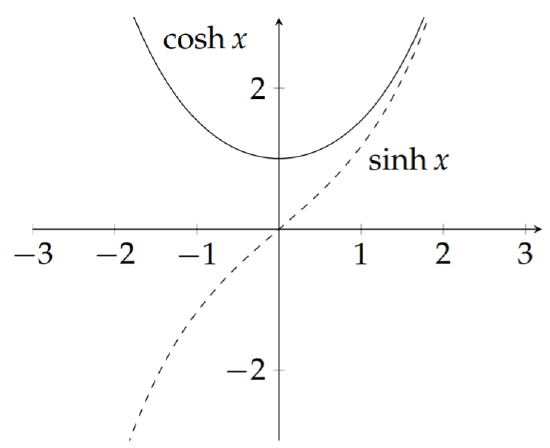11.3: Hyperbolic Functions
( \newcommand{\kernel}{\mathrm{null}\,}\)
So, are there any other functions that are useful in physics? Actually, there are many more. However, you have probably not see many of them to date. We will see by the end of the semester that there are many important functions that arise as solutions of some fairly generic, but important, physics problems. In your calculus classes you have also seen that some relations are represented in parametric form. However, there is at least one other set of elementary functions, which you should already know about. These are the hyperbolic functions. Such functions are useful in representing hanging cables, unbounded orbits, and special traveling waves called solitons. They also play a role in special and general relativity.
Solitons are special solutions to some generic nonlinear wave equations. They typically experience elastic collisions and play special roles in a variety of fields in physics, such as hydrodynamics and optics. A simple soliton solution is of the form
We will later see the connection between the hyperbolic and trigonometric functions in Chapter 8.

Hyperbolic functions are actually related to the trigonometric functions, as we shall see after a little bit of complex function theory. For now, we just want to recall a few definitions and identities. Just as all of the trigonometric functions can be built from the sine and the cosine, the hyperbolic functions can be defined in terms of the hyperbolic sine and hyperbolic cosine (shown in Figure
There are also a whole set of identities, similar to those for the trigonometric functions. For example, the Pythagorean identity for trigonometric functions,
A list of commonly needed hyperbolic function identities are given by the following:
There also exist inverse hyperbolic functions and these can be written in terms of logarithms. As with the inverse trigonometric functions, we begin with the definition
The final step is to solve for
The inverse hyperbolic functions are given by


